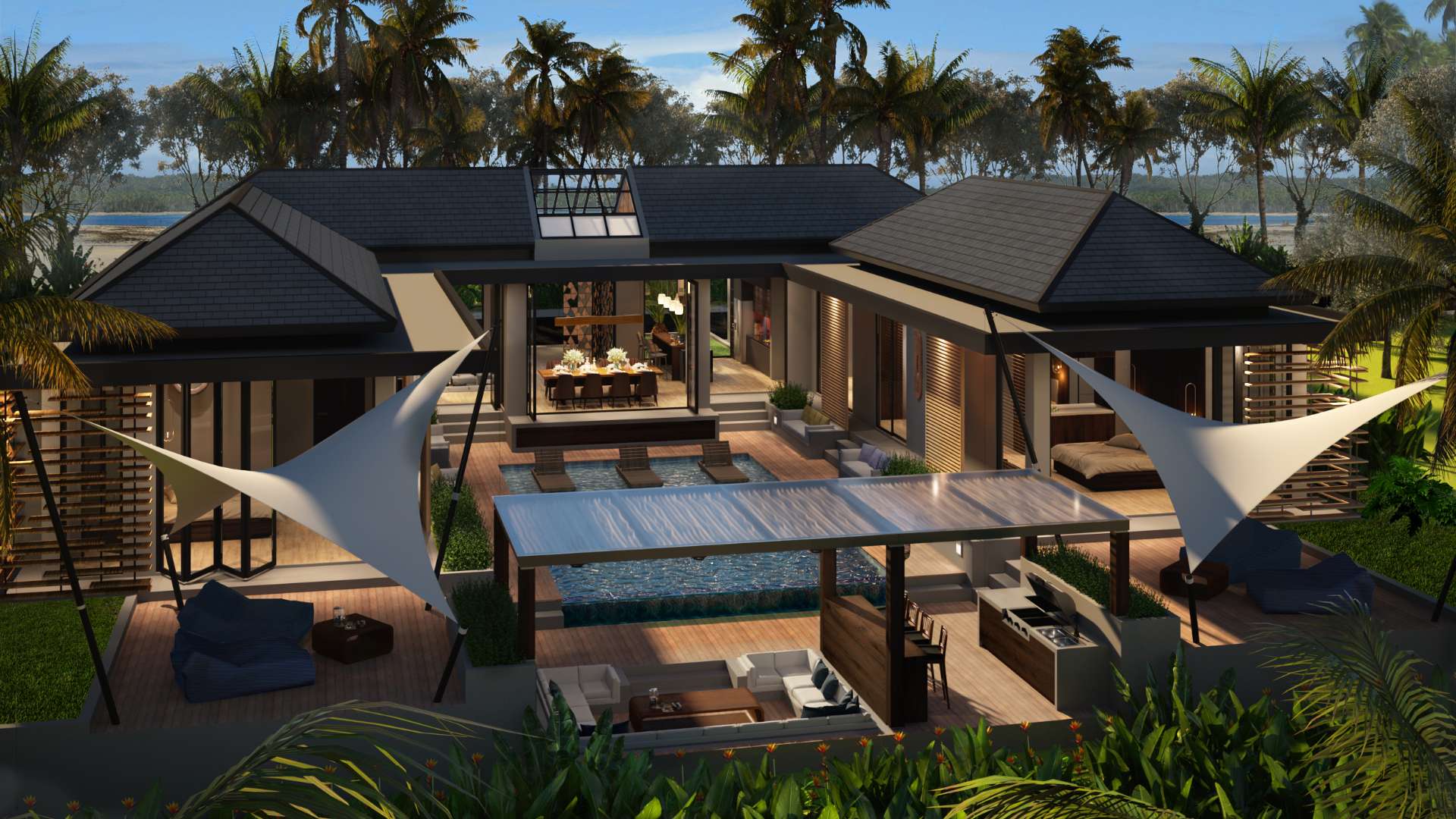Avoiding Failures with Construction In Bali

Avoiding failures with Construction In Bali should be a top priority for all those building in Bali. For some, it is a dream but for many it can quickly become a nightmare if you’re not prepared for how fundamentally different the construction environment is here.
Unlike Western markets, where rigid building codes, inspections, and project accountability are standard, Bali operates in a vastly different framework. Construction here is driven more by informal relationships than by formalized systems. Contractors often work without structured oversight, detailed scopes, or long-term accountability. Quality benchmarks are vague. Timelines are fluid. And contracts are often light on detail, if they exist at all. For first-time foreign investors or property developers, this can come as a shock.
What looks like cost savings early on often results in:
- Structural failures within months
- Costly rework
- Delayed occupancy or rental potential
- Disputes over “who was responsible for what”
- A complete erosion of trust in the process
Foreign clients, especially those from countries with strict regulatory environments, often assume things are “under control” just because people show up on site. They’re not. Unless proactive steps are taken, construction in Bali can, and often does, go wrong in expensive and avoidable ways.
This guide outlines the most common construction failures we’ve seen repeatedly in Bali, and offers insights into how they happen, why they persist, and what serious investors need to understand before they build.


Inadequate Site Supervision
Without active site supervision, construction projects in Bali are often left to run themselves. It’s common for builders to check in occasionally — or only when something goes wrong. Day-to-day work is frequently carried out by subcontractors without oversight or accountability.
This lack of structured management can lead to:
- Misaligned installations
- Incorrect measurements
- Missed milestones
- Poor coordination between trades
It’s not uncommon for costly errors to be discovered after they’ve been covered with finishing materials. In a system where “good enough” is often accepted, consistent supervision is the exception, not the rule.
How It Can Be Prevented:
Effective projects require daily site supervision from someone qualified to spot and correct issues. Implementing checklists, progress tracking, and photographic documentation ensures accountability. Real-time updates also keep investors informed and reduces rework costs.
Poor Drainage and Waterproofing Practices
Bali’s tropical climate demands robust waterproofing systems and drainage planning. Yet many projects rely on minimal slope angles, low-grade membranes, and surface-only solutions.
The result?
- Interior mold
- Bubbling paint
- Structural water damage
- Slippery outdoor surfaces
- Long-term decay of walls and foundations
In many builds, there’s little distinction made between visual completion and functional resilience. Waterproofing is frequently rushed or skipped, and only tested when it’s too late.
How It Can Be Prevented:
Waterproofing should be planned from the design phase and executed with proven tropical membrane systems. Drainage must be engineered, not improvised. Testing all water-prone areas before finish work is critical to avoid future water damage.
Unverified Concrete and Structural Work

Concrete is often mixed on-site by eye — not by ratio or formula. Steel reinforcement may be improperly spaced, tied, or missing entirely. Rarely are batch reports, soil tests, or curing schedules enforced.
This can lead to:
- Cracking within months
- Subsidence or sinking
- Structural failure under load
While it may appear strong on the surface, unverified concrete work can undermine the integrity of the entire build, and there’s often no way to know until failure occurs.
How It Can Be Prevented:
Use engineered structural drawings and require verification for concrete mixes and steel installation. Batch reports, third-party inspections, and site logs help ensure that what’s built matches what’s designed, and that it lasts.
Low-Quality Electrical and Plumbing Installation
Electrical systems are sometimes installed without grounding, proper junction boxes, or compliance with safety codes. Plumbing lines may be poorly pressurized, improperly sloped, or prone to leak.
What this means for owners:
- Short circuits or outages
- Flooding behind walls or under tiles
- Water pressure imbalances
- Higher maintenance costs
These systems are usually hidden, but their failures are not. And yet, they’re often treated as an afterthought during the build.
How It Can Be Prevented:
Qualified, code-compliant electricians and plumbers must be engaged. Electrical plans should include circuit diagrams, grounding, and breaker sizing. Plumbing should be slope-calculated and tested before concealment. These aren’t luxury extras, they’re essentials.


Budget-Led Material Decisions
Material choices are frequently made on cost, not lifecycle value. Items like tiles, fittings, roof sheets, paint, or cabinetry may look acceptable during handover — but begin to degrade within the first year.
Problems include:
- Surface wear and tear
- Tile delamination
- Paint flaking or fading
- Broken fixtures from overuse
In many builds, the long-term view is rarely taken. Durability is secondary to affordability, which means more repairs, replacements, and renter dissatisfaction down the line.
How It Can Be Prevented:
Material choices should balance cost with lifecycle value. Specify materials with proven durability in tropical environments, even if the upfront cost is slightly higher. Quality materials reduce long-term maintenance, preserve resale value, and improve rental appeal.
Lack of Clear Contracts or Defined Scope
It’s common for builds in Bali to proceed with vague or incomplete documentation. Changes are handled verbally, expectations shift, and blame becomes difficult to assign.
This often leads to:
- “We didn’t agree on that” scenarios
- Surprise change orders
- Disputes over responsibilities
- Budget inflation
Without structured contracts, both parties are exposed. Scope creep becomes inevitable, and trust quickly breaks down.
How It Can Be Prevented:
A clear contract should outline the scope, timelines, responsibilities, payment stages, and expectations. Build with documentation that supports both builder and client, it protects everyone from miscommunication and assumptions.
Weak Timeline Discipline

Delays are common and often normalized.
There’s rarely a detailed project schedule enforced, and trades may come and go with little coordination. Rain, holidays, or resource gaps are frequent excuses — and there’s little recourse for missed deadlines.
The result:
- Extended construction times
- Lost rental income
- Stalled investor returns
- Opportunity costs from delays
In Bali, being “a bit late” is culturally tolerated, but in a business context, it can be incredibly costly.
How It Can Be Prevented:
Detailed build schedules with critical path tracking help keep timelines realistic and enforceable. Weekly reporting, progress benchmarks, and escalation plans ensure accountability and pace, even when obstacles arise.
No Formal Quality Control or Reporting
In many projects, quality is assessed visually, not through process-driven checks or documentation. There’s no punch list, no milestone reviews, no technical validation.
This means:
- Hidden issues are signed off
- No records of who did what
- Handover becomes a scramble
- Warranty periods are unclear
Without formal QA/QC systems, the definition of “complete” is entirely subjective and usually biased toward whoever wants the job to be over.
How It Can Be Prevented:
Structured QA/QC processes involve checking each milestone before moving to the next. Slab curing, MEP rough-ins, waterproofing, and final finishes should each be inspected with documented signoff before continuation. Quality becomes a system, not an opinion.


Missing or Incomplete Permits
Building without the correct permits (PBG, SLF) is not uncommon, especially on private land, or when investors are unfamiliar with local legal processes.
Risks include:
- Government enforcement or site shutdown
- No ability to rent or sell legally
- Increased scrutiny for future expansions
- Legal exposure for foreign owners
What seems like a shortcut early can become a show-stopper later.
How It Can Be Prevented:
Ensure that your project has full permitting from start to finish. Hire consultants or legal professionals familiar with Bali’s regulations, and don’t rely on verbal reassurances that “it will be fine later.” It often won’t be.
Misaligned Communication and Expectations
Language barriers, cultural differences, and mismatched assumptions can lead to misunderstanding, miscommunication, or total breakdowns in trust.
Examples include:
- Design elements not executed as discussed
- Work being “reinterpreted” on site
- No updates or transparency on progress
- Investors left guessing about costs or timelines
Even with the best intentions, communication gaps create anxiety, and anxiety leads to oversight, inefficiency, and regret.
How It Can Be Prevented:
Clear communication channels are essential, ideally with fluent English speakers and written documentation. Use drawings, meeting notes, and client approvals at each stage to reduce ambiguity. Transparency builds trust and ensures shared expectations are met.
Conclusion
Construction in Bali isn’t broken, but it is different. And if you’re coming from a market where process, accountability, and standards are expected, it’s critical to understand what you’re walking into.
Most failures aren’t caused by ill intent. They’re the result of:
- Lack of structure
- Absence of oversight
- Cultural norms that differ from international expectations
For anyone serious about building here, whether for personal use or investment, awareness is the first tool of protection. Know what can go wrong. Ask the hard questions. And build with the same discipline you expect anywhere else in the world.
Let’s Talk




